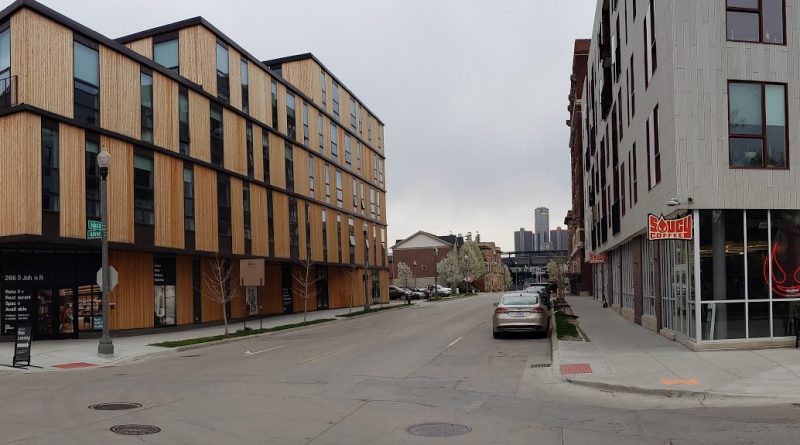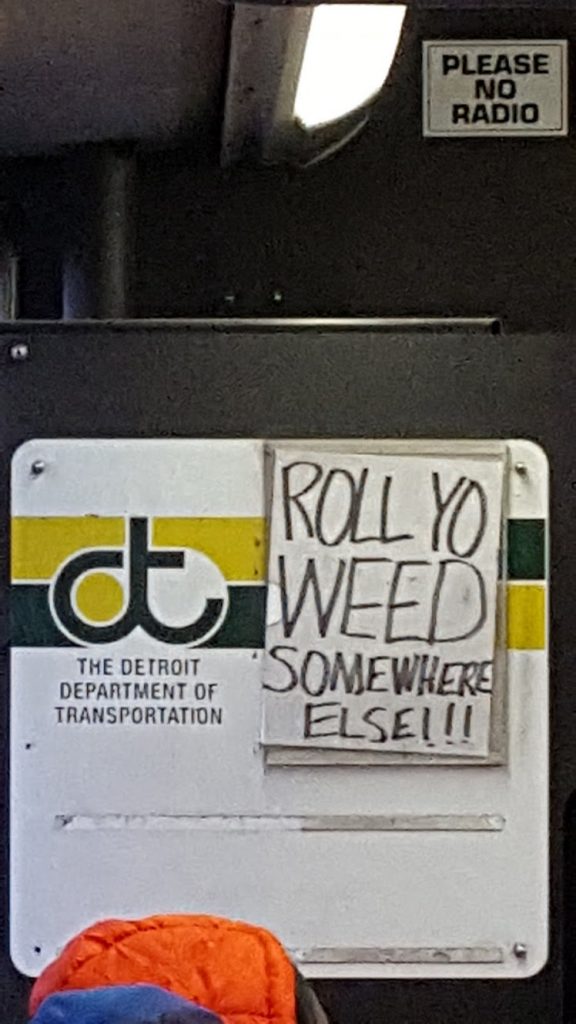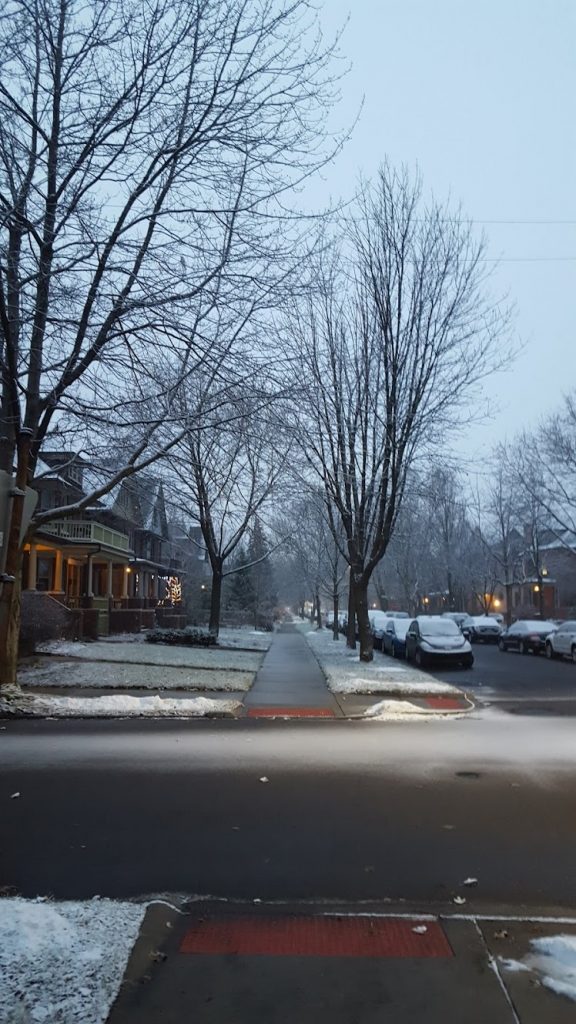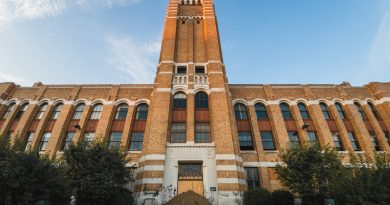Mike Duggan’s Legacy of Austerity, Corporate Power, and State Violence
I SPENT THE WINTER OF 2017 AND SPRING OF 2018 CARLESS and living on the far east side of Detroit. Anyone who has ever lived carless in Detroit outside of perhaps the “7.2” can likely attest to the fact that it isn’t for the faint of heart. I had survived a car accident that left me $8000 in the hole (the calculation of “spending $423 a month for car insurance” vs. “assuming that saving $160 a month will outweigh the unlikely occurrence of getting in a car accident, with a 11-year-long, immaculate driving record”).
Of course, it didn’t actually come every 20 minutes. Sometimes, I’d have to wait 40 minutes, the time in which two buses were supposed to come. The Transit app, bless its heart, wasn’t tracking every bus in realtime, just some of them, and estimating the others. So, it was a complete crapshoot. A 40-minute door-to-door trip might take more like an hour and a half. This meant it was impossible for me to plan on specific times for everything ranging from coffee dates to yoga classes unless I planned everything out about two hours in advance. It was more reliable to bike to Jefferson Avenue and then take the bus from the Grosse Pointe border. But then this meant usually three modes of transit– biking, busing, and walking to and from my downtown destinations.
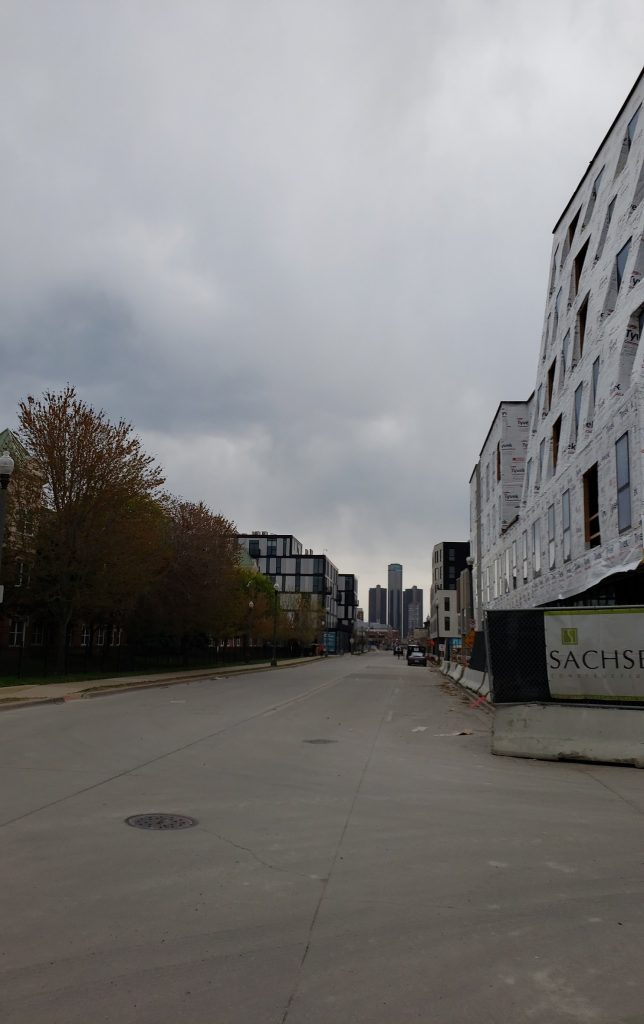
A friend hooked me up with a mountain bike, which was in great shape after replacing the tires and the chain. I bought monthly bus passes. A couple of times I actually cross-country skied to Grosse Pointe during snowstorms to buy groceries. I walked a lot and was in great shape, especially notable since it was a 12-minute walk to the bus and a 37-minute walk to a real grocery store. The Warren bus, known at that time as the 14 or the Crosstown, was a convenient way for me to get between my house in East English Village and the central Woodward corridor. It took some time, but it was scheduled every 20 minutes most of the time.
The interesting thing about coming from the far east side to downtown was the ability to see miles of bombed out streetscapes from East Warren and East Forest, only to arrive along the Woodward corridor, where billions of dollars in public subsidies have facilitated the development of 2×4-not-even-built-to-code, stick frame, mid-rise apartment buildings renting out for $2 and $3 a square foot.
This was, of course, the Mike Duggan era.
The city’s first white mayor since Roman Gribbs left office in 1974– Gribbs’ short term succeeded Jerome Kavanagh, who lost support following the events of 1967- for what would become a 20-year reign of the city’s first Black mayor, Coleman Young, Mike Duggan’s legacy was built out of the ashes of the city’s bankruptcy. This meant he, like all of the colonial developers who descended upon the city to pick up the pieces of the 2008 housing market collapse, was left with a “blank slate.” Eliminating costly debt meant he could build something from scratch, scent-marking on every streetcorner and borrowing against the future to fund his own idea of progress– every white man’s colonial dream. This ties in directly with the Duggan hallmark, a quest to demolish all of the city’s derelict buildings, even if it means borrowing hundreds of millions of dollars of future revenue we don’t really ahve to do it. He’s even allowed the wholesale demolition of reusable buildings in the downtown core. To build parking lots. Because cars.

City government has since been populated by a revolving door of well-heeled technocrats, who inevitably leave for the private sector or advance higher in the public professional apparatus (one might think of Wharton man Jed Howbert, who started his own real estate development company after leading the mayor’s Jobs and Economy Team, Ryan Friedrichs, who went to Related after leading the city’s philanthropic partnership grants office, or Arthur Jemison, who is now at HUD after leading the city’s Housing and Revitalization Department. Sadly, as an aside, the city building department, where I worked for about 45 minutes, has seen no such ascendancies, its leadership relegated to the stone ages).
This isn’t to say that the Duggan regime isn’t getting stuff done, or that these people are bad people. But it’s a far cry from a pluralistic, democratic structure for city government. The foundation-industrial complex is as powerful as the corporate power structure in Detroit. But the city being run by a guy who seems to have a pretty deep aversion to the democratic process and a pretty deep affinity for dark corporate money suggests that there are deeply conflicting priorities in the question of For Whomst [sic] We Are Building A New Detroit.
Book Review: Nathan Bomey’s “Detroit Resurrected”
Stephen Henderson interviewed the Mayor briefly on Detroit Today. Duggan took a few shots at his challenger Anthony Adams, “an attorney who lives in a gated community” on the city’s East Side. I found this a bit rich seeing as Duggan doesn’t even seem to live in the city of Detroit, a topic that came up when it turned out he was having an affair with the director of a program who received city grant funding. Meanwhile, Duggan refused to debate Adams, which I viewed as a sign of profound arrogance. (And it doesn’t matter. Duggan is inevitably going to win in a landslide– I’m guessing it’ll be like upper 60-some to Adams’ 20-some percent).
Nefarious transit service cuts. Duggan’s administration presided over an ambitious and successful modernization and rebranding of the city’s dilapidated bus fleet. But when the pandemic hit, service cuts began. New DDOT Director Mikel Oglesby and Duggan locked step in pushing aggressive service cuts that see buses come only hourly even on major corridors. The service cuts, they say, will improve service. (This was the same argument made in the aftermath of the bankruptcy, which saw the decimation of numerous longstanding city services like a substantial public health apparatus).
“DDOT service is not where it should be, and I’m not happy about it at all,” Duggan said today, when grilled about transit cuts. Duggan cited 20% pay increase– to what is still barely a living wage, and certainly not a thriving wage- as progress that has been made. He also cited the importance of federal funding to support the city’s beleaguered transit agency. But the majority of federal funding goes to capital improvements, and, he said, it’s unable to fund long-term operating expenses, like pension obligations. DDOT, like the rest of the public sector in Detroit, has also struggled to retain talent, losing a number of their operations stars in the past few years.
Nefarious But Effective. No doubt an army of Duggan reply guys– like my dear friend Rob, a Ford engineer with deep-rooted neoliberal affinities about how Downtown Is Coming Back and James Craig Was A Great Police Chief– will tell me I’m just trying to stir the pot, and would I really prefer someone who can’t get anything done, and how do I not appreciate the great things Duggan has done for this city. After all, I’m generally the first to admit that I’d rather have someone who is slightly nefarious, smart, and effective rather than someone who is well-intentioned but dumb and ineffective. But Craig not only cuddled up to Duggan, he also cuddled up to William Barr and Donald Trump. He went so far as to stage a well-publicized photo op with Bill Barr, flying over the city on a mysterious helicopter ride around the time Trump was suggesting shooting immigrants and protesters, while the Barr DOJ was busy dispatching DHS shock troops to major cities in an action that, they claimed, had absolutely nothing to do with the Black Lives Matter protest movement. Duggan owns this bullshit.
A Legacy of Violent and Corrupt Policing. James Craig, for his part, was buddy-buddy with Duggan for his entire tenure as police chief. Craig presided over his own officers participating in a felonious towing scandal– that has brought scandal to City Council as well- and Duggan owns that, too. So, too, did Craig preside over a legacy of brutal police violence against nonviolent protesters, legal observers, and journalists. While wielding a camera and a press badge, I wore for a couple of weeks a nice red bruise on my chest where I got hit point blank with a tear gas canister by a police officer who most certainly did not live in the city of Detroit. Duggan owns this as well. But it doesn’t matter to most Detroiters. Duggan’s administration will preside over a slew of civil rights lawsuits against the city and the police department that the city is likely to settle as they always do.
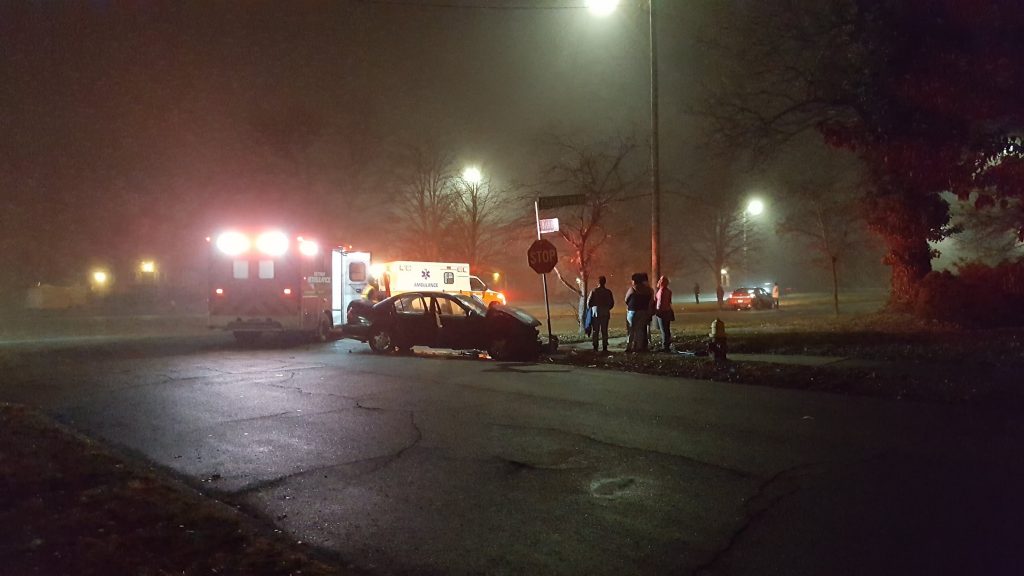
The legacy of police violence is certainly the kind of antics actively cheered by The Suburban Hwites [sic], like our friend Rob (who, we should state for the record, does live in the city even if he, like me, didn’t grow up here). Livonia, where the mayor hails from (and where he lived when he started his longshot write-in campaign for mayor), seems to like the guy. Yeah, he’s a Democrat, but he’s more similar to a Republican in his deep love for Reaganomics and his strong affinity for privatization. Meanwhile, Rob, for his part, hasn’t ever had to breathe tear gas for something he wants to fight for. Nor has he had to suffer from the $600 million property tax overcharge, which, Duggan says, he can’t do anything about, even if it’s his fault. Rob makes white collar money, so it’s fine for him to cheer on the era of corporate power. This is how the gears of the Detroit machine work.
And therein lies the magic of neoliberalism. Turn a blind eye to state violence, welcome the trickle-down effects of corporate power, and hope for the best. If the poors get screwed, well, maybe they should have worked harder? Maybe I shouldn’t have been doing my job when I got hit with a tear gas canister by some Trump-worshipping Macomb County cop? Forget the DDOT service cuts! You can get a job at the Amazon facility making barely a living wage! Or the Mack Avenue plant! Never mind that it’s making the neighborhood smell bad. What, you want economic vitality and a clean environment? So demanding!
The Legacy of Population Loss. Taking a thoroughly Trumpian tack, Duggan went so far as to suggest that the city would litigate the results of the 2020 census, which indicated the the city had indeed lost a substantial amount of population in the past decade. This was surprising to the downtown boosters. But a drive through any of the neighborhoods, particularly along the city’s spoke corridors like Gratiot, Michigan, Jefferson, Van Dyke, Grand River, or McNichols, 7 Mile, or 8 Mile, will show you that the mayor’s interest in district development outside of downtown is profoundly limited.
There are less gloomy things. Detroiters will vote on three proposals, E, R, and S:
- Proposal R establishes a commission to explore the question of reparations in Detroit. I will probably vote for this, because it was part of the Charter Commission recommendations, which Mike Duggan hates, and therefore I’ll probably support. There is, of course, a fiduciary ouroboros in the notion of taxing Black Detroiters to fund reparations to Black Detroiters, of course. But it’s certainly an interesting question, and one that we need to be discussing.
- Proposal E involves the question of decriminalizing psychedelics. I’m a big fan of “legalization as a path toward safe regulation and taxation” for things like cannabis (successful), psychedelics (growing in popularity in the United States), and, eventually, other drugs. There is no reason why taxpayers should spend money to prevent (Remember our friend Roberto? He is worried that this will make it so you can buy mushrooms at the gas station, consume them, and walk out into traffic while tripping balls).
- Proposal S, finally, amends the city charter to allow for more direct democratic input into city processes. The Mayor and his ilk oppose this sort of thing, as they opposed the charter commission. But democratic access in a majority Black city controlled mostly by white corporate power seems like a thing it’s worth voting for.
Voting for Denzel Campbell for Clerk, Landis Spencer for Board of Police Commissioners, and Gabriela Santiago-Romero for City Council in District 6, replacing the outgoing Raquel Castañeda-Lopez. Perennially incompetent Janice Winfrey beat Garlin Gilchrist when the now-Lieutenant Governor ran against her. I don’t think Campbell is likely to win because Winfrey is so entrenched. Spencer I have no idea about. I suspect Santiago-Romero will win as the heir apparent to Castañeda-Lopez (both smart, young, U of M educated, good looking, substantially left-of-center, Detroit native Latinas), even receiving a reluctant endorsement from Mike Duggan, who has frequently sparred with the outgoing councilwoman owing to her staunchly anti-corporate, populist positions.
And with that? Good luck to Duggan, I guess. I have no doubt that he’ll win in a landslide. And I have no doubt that he’ll continue his reign of Reaganomics. For me, I look forward to the day when I live in a city with clean air, frequent transit service, well-funded education, clean energy, clean streets, well-maintained sidewalks, and well-developed multimodal transportation infrastructure networks. Detroit has none of these, in spite of the fact that we pay a hefty city income tax (not a payroll tax– an income tax) and have seen our property taxes triple in the past three years. But hey, I mean, the Hudson’s site is getting redeveloped into ultra-luxury housing and commercial tower (that isn’t gonna be as big as they originally said it would be), right?
This article was updated with comments about the City Clerk, Board of Police Commissioners, and City Council races, and also to correct a material error about the last white mayor of Detroit. I had previously said that Jerome Kavanagh was the last white mayor, when it was, in fact, Roman Gribbs– an omission my work-addled brain probably made because Gribbs kind of sucked and has therefore been relegated to the dustbin of history. Thanks to Rob Linn for pointing this out and I’m sorry about the inaccuracy.

